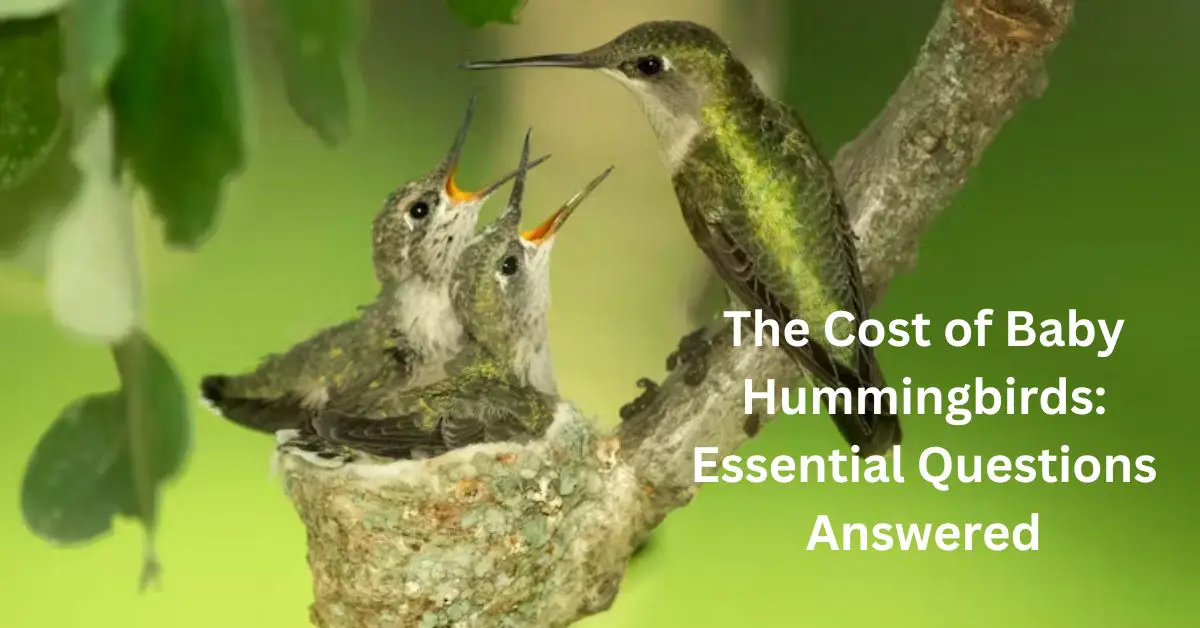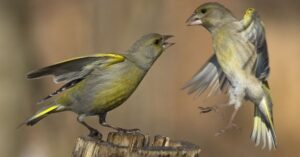Nestled in the delicate embrace of a meticulously woven nest, a newborn baby hummingbird enters the world as one of nature’s most astonishing marvels. These tiny creatures, often no bigger than a thimble, embody an array of vibrant colors and extraordinary abilities that leave us in awe.
But beyond their dazzling appearance and remarkable flight capabilities lies an intriguing life cycle shrouded in mystery, especially when it comes to their early stages of development. From egg to fledgling, each phase is packed with challenges and wonders that captivate both casual observers and avid bird enthusiasts alike. Here are some frequently asked questions about baby hummingbirds:
1. When Is Mating Season For Hummingbirds?
Mating season for hummingbirds typically occurs in the late spring to early summer, depending on the species and geographic location. During this vibrant time, male hummingbirds engage in intricate courtship displays that often involve aerial acrobatics and dazzling flashes of color.
These performances not only showcase their health and vitality but also attract potential mates. Each male aims to secure a territory rich in nectar sources, creating an enticing environment for female hummingbirds looking to build nests.
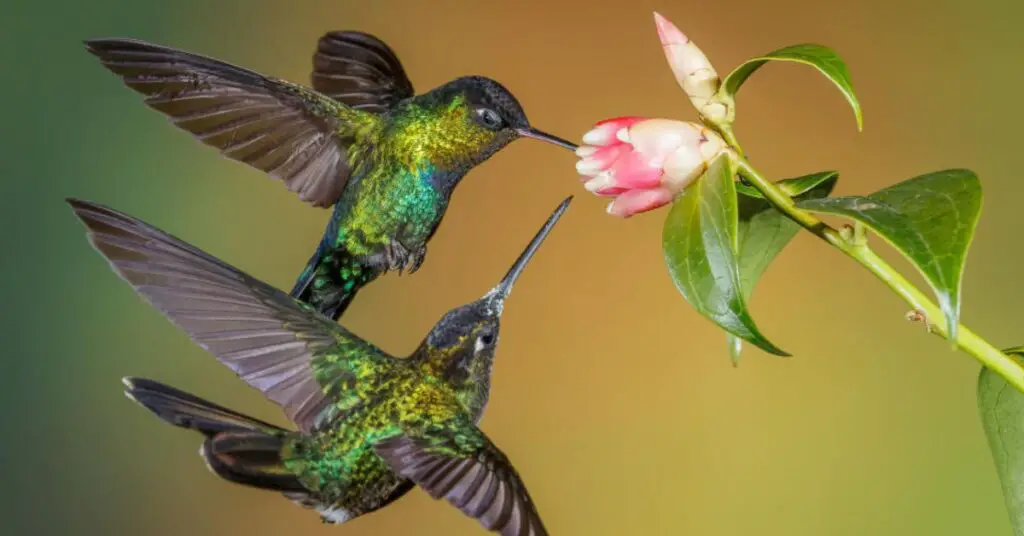
Once a female selects her mate, she takes on the responsibility of constructing a nest—a meticulous process that can take several days. Using materials like spider silk, plant fibers, and even downy feathers, she carefully crafts a secure home for her future brood.
After laying her eggs—usually two—she will fiercely guard them until they hatch into delicate newborn baby hummingbirds just 14-20 days later. The bond between mother and her hatchlings is profound; once they emerge from their tiny shells, it’s a race against the odds as she nurtures these fragile beings through their initial stages of life before they embark on their own journey into the world.
2. How Many Babies Will A Hummingbird Have?
Hummingbirds typically lay two eggs per clutch, with the size of each egg being a mere fraction of an inch—about the size of a pea. This diminutive size is astonishing when you consider that these tiny creatures will eventually grow to be vibrant and agile fliers.
Once born, baby hummingbirds are featherless and entirely dependent on their mother for survival. Their early days are crucial; they remain in the nest for about three weeks, during which time they undergo rapid growth and development.
You might wonder why do you never see baby hummingbirds? The answer lies largely in their nesting habits. Hummingbird nests are cleverly camouflaged within vegetation, often hidden from plain sight by leaves or branches.
This strategy not only protects them from potential predators but also keeps prying eyes away as well. Observing a fledgling take its first flight is a rare treat; it’s fleeting moments like this that make spotting young hummingbirds such an elusive pleasure in nature’s tapestry.
3. How Long Does It Take A Hummingbird To Hatch?
The incubation period for hummingbird eggs typically spans about 10 to 14 days, a remarkable feat considering the minute size of their offspring. Once the tiny eggs are laid, often no larger than a jellybean, the mother hummer takes on the vital role of protector and incubator.
During this delicate stage, she relies on her innate ability to regulate temperature by constantly shifting her body over the eggs to keep them warm. This behavior not only safeguards her precious cargo but also underscores the incredible commitment she has toward her future hatchlings.
When these miniature marvels finally break free from their shells, they emerge as tiny baby hummingbirds that can weigh less than a penny! These newborns are astonishingly vulnerable; they open their eyes for the first time and rely entirely on their mother’s care for warmth and nourishment in those initial days.
Observing nature’s protective instinct in such a diminutive creature offers a new perspective on resilience—despite being so small at birth, these little ones begin an extraordinary journey towards flight just weeks later, showcasing survival instincts that rival far larger animals in the wild. The transformation is nothing short of spectacular; it serves as a reminder of nature’s capacity for life even within the tiniest forms.
4. How Small Is A Baby Hummingbird?
The baby hummingbird size is astonishingly small, often measuring just about 2 to 3 inches long at birth. This miniature size makes them among the tiniest birds in the world, and their feather-covered bodies weigh less than a penny. Despite their diminutive stature, these hummingbird babies display remarkable vitality and resilience as they grow rapidly in their nests.
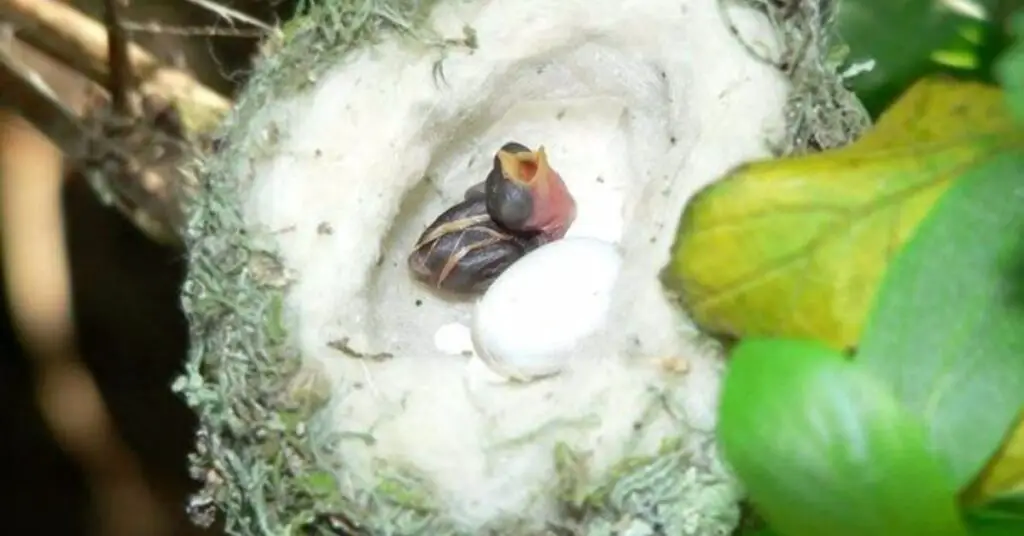
Hummingbird babies are typically born blind and devoid of feathers, relying entirely on their mothers for nourishment during the early days of life. As these little wonders develop, they experience phenomenal growth rates—tripling in weight within just a few weeks. Their rapid transformation from vulnerable hatchlings to energetic fledglings showcases one of nature’s most fascinating processes.
Understanding baby hummingbird size not only highlights how extraordinary these creatures are but also emphasizes the vital role parental care plays in ensuring their survival and health as they take flight into the world.
5. What Does A Baby Hummingbird Look Like?
A baby ruby throated hummingbird is a marvel of nature, captivating bird enthusiasts with its tiny size and delicate features. These hatchlings are incredibly small, measuring just about an inch long when they emerge from their eggs.
Initially covered in downy feathers, they might not resemble the vibrant adult birds we often see, but they exude charm with their minute beaks and large eyes that glisten with curiosity. As they grow, these little wonders display hints of the brilliant iridescent plumage that will eventually define them as one of North America’s most beloved species.
When considering how big is a hummingbird egg, it’s impressive to note that these minuscule eggs typically measure only around 1 to 1.5 centimeters in length—the size of a small jellybean! Each egg weighs less than a gram and is crafted by the female hummingbird using plant material and spider silk to form a secure nest for her future chicks.
The nurturing process begins as she incubates these fragile gems for about two weeks before witnessing the extraordinary journey from hatchling to full-fledged adult—a breathtaking transformation that highlights nature’s incredible cycle of life.
6. What Do Baby Hummingbirds Eat?
Baby hummingbirds primarily feed on a diet of regurgitated nectar and insects, which their mothers provide in the comfort of their delicate nests. The hummingbird nest is meticulously crafted, often resembling small cups made from plant fibers, spider silk, and sometimes even pieces of leaves or feathers.
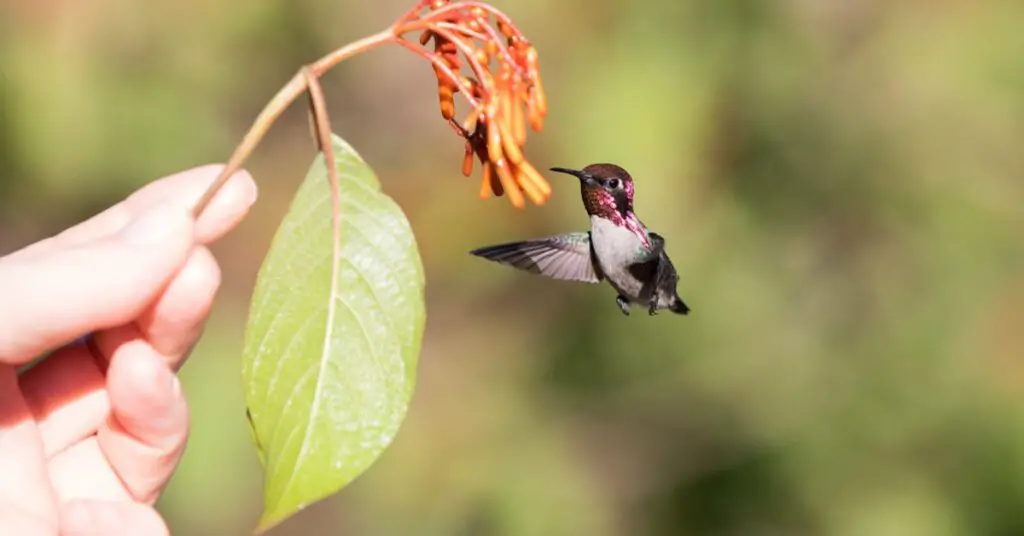
This intricate construction not only ensures the safety of the young but also offers an insulating environment that helps maintain the eggs’ temperature before they hatch.
The hummingbird nest size can vary significantly depending on species but typically measures about 2 to 5 inches in diameter. Once inside this snug structure, baby hummingbirds rely heavily on their mother for sustenance during the critical early days of life.
After hatching, they grow rapidly and will fledge within three weeks, making it essential for them to receive proper nutrition from both nectar and protein-rich insects during this formative stage when they are most vulnerable. Understanding these aspects highlights how vital a nurturing habitat is for successful breeding in these incredible little avians.
7. How Long Until A Baby Hummingbird Can Fly?
The life cycle of a baby bee hummingbird unfolds with remarkable precision, beginning from the moment it hatches from its tiny egg. These little avians emerge after approximately 14 to 19 days within the comfort of their hummingbird nest, nestled among leaves or branches.
During their early weeks, they rely heavily on their mother for sustenance, enjoying a diet rich in nectar and insects. As they grow rapidly, fully fledged younglings may take as little as three weeks to develop the strength needed for flight.
Once ready to explore beyond the confines of their cozy nesting environment, baby bee hummingbirds display an inspiring burst of energy and agility. This transformation is not solely physical; they acquire essential skills related to navigation and feeding that are critical for survival in the wild.
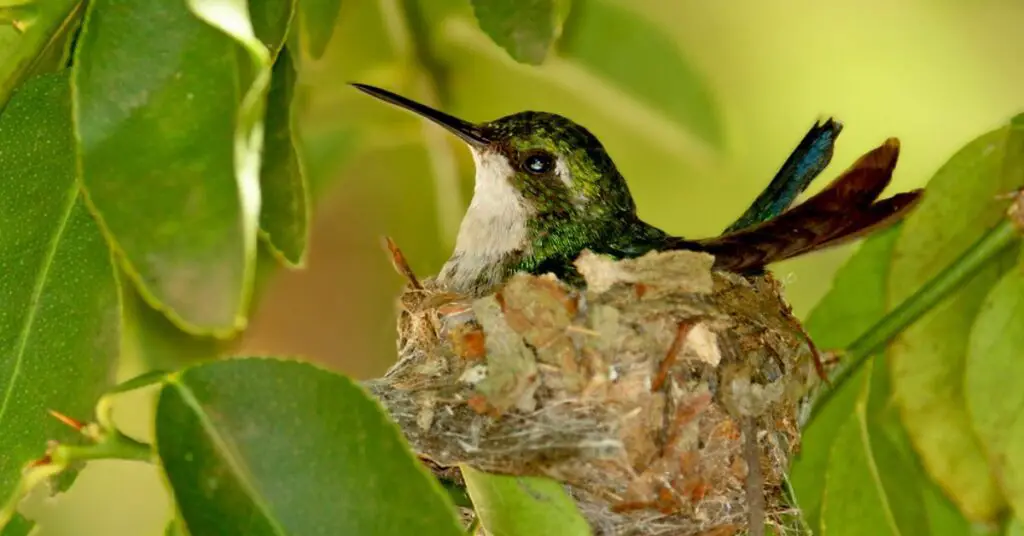
The vivid scene at a thriving hummingbird nest—filled with fluffy chicks perched close together—signals nature’s intricate design at work and the perseverance required as these delicate birds prepare for their first flight into the vast world ahead. In just over three weeks post-hatching, these wonderful creatures are poised to grace our skies with their mesmerizing presence and remarkable aerial acrobatics.
Conclusion
The world of baby hummingbirds is as captivating as it is intricate, revealing the remarkable adaptations and behaviors these tiny creatures exhibit from their very first days. From understanding their unique nesting habits to recognizing the critical role of their diet in growth and development, every detail contributes to their survival.
The answers to common questions about these enchanting birds highlight not only their fragility but also their resilience in nature. As we continue to explore and appreciate these fascinating beings, we can all contribute to conservation efforts that protect their habitats.
FAQ’s
What Do You Call Baby Hummingbirds?
Baby hummingbirds are commonly referred to as hummingbird chicks or hummingbird hatchlings. When these tiny birds first emerge from their eggs, they are incredibly small and vulnerable, often weighing less than a penny.
Hummingbird chicks rely entirely on their mother for warmth and food during the initial stages of life, as they are born featherless and blind.
What Do Hummingbirds Symbolize?
Hummingbirds are often seen as symbols of joy, love, and resilience. Their vibrant colors and agile movements evoke a sense of happiness and playfulness, making them associated with positive emotions.
In many cultures, these birds are believed to represent the beauty of life and the importance of living in the moment.
How Do Hummingbirds Sleep?
Hummingbirds have a unique way of sleeping that allows them to conserve energy during the night when food sources are scarce. Unlike many other birds, hummingbirds enter a state called torpor, which is a deep, hibernation-like sleep.
During torpor, their metabolic rate drops significantly—by as much as 95%—enabling them to survive on stored energy. This physiological adaptation is crucial, given their high-energy lifestyle and rapid wingbeat.
- How To Keep Bees Away From Hummingbird Feeders - March 20, 2025
- How To Attract Owls To Your Yard - March 11, 2025
- Breeding Season For Wild Birds - March 9, 2025
